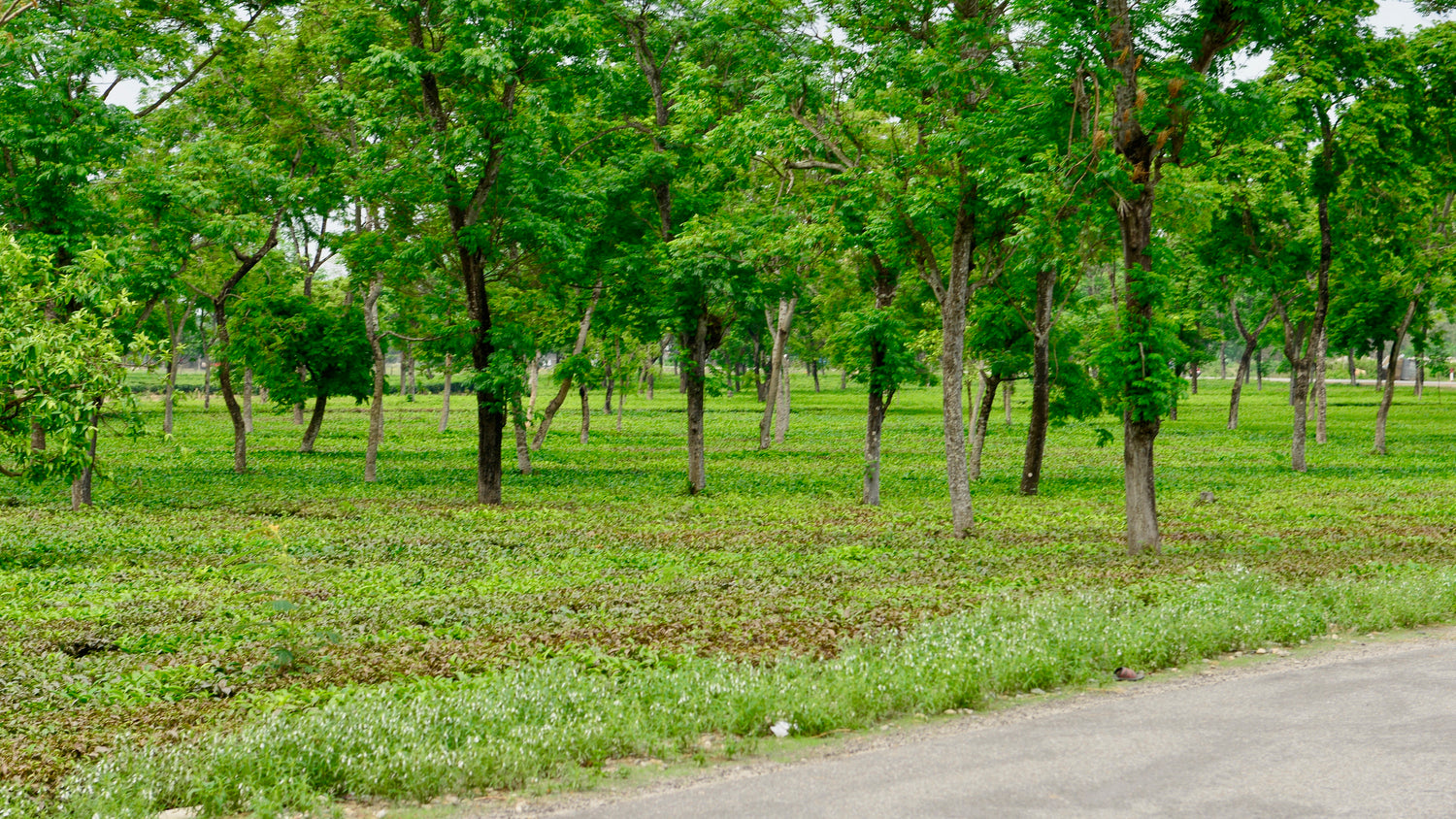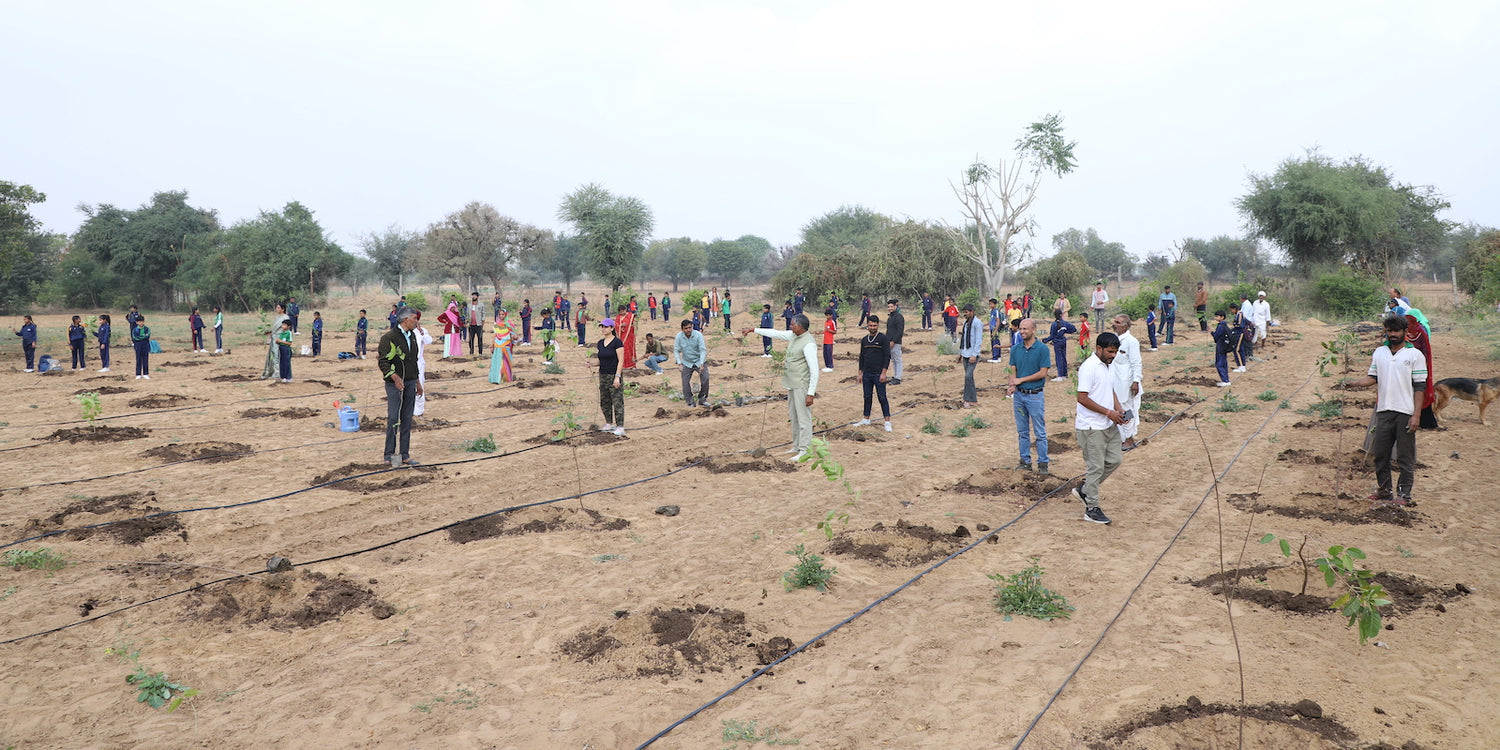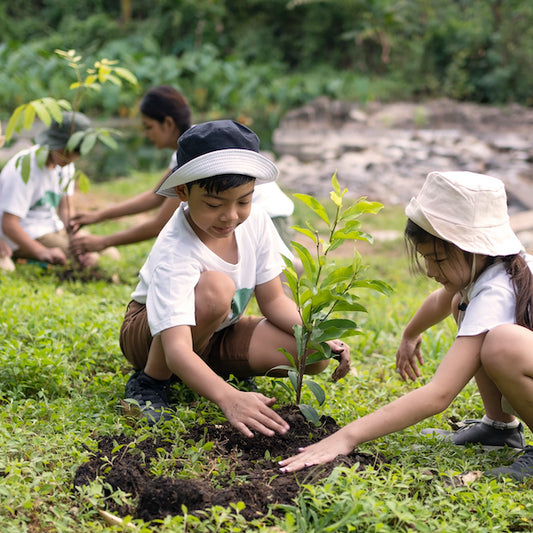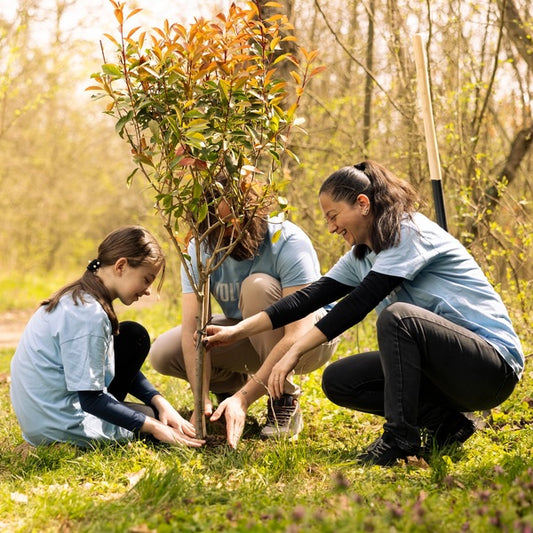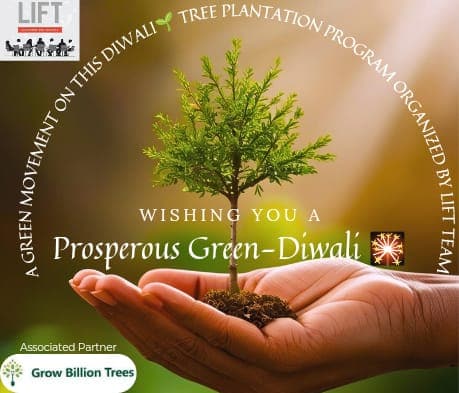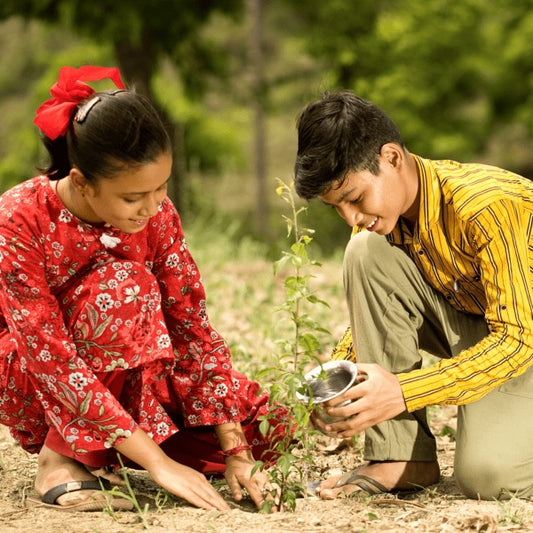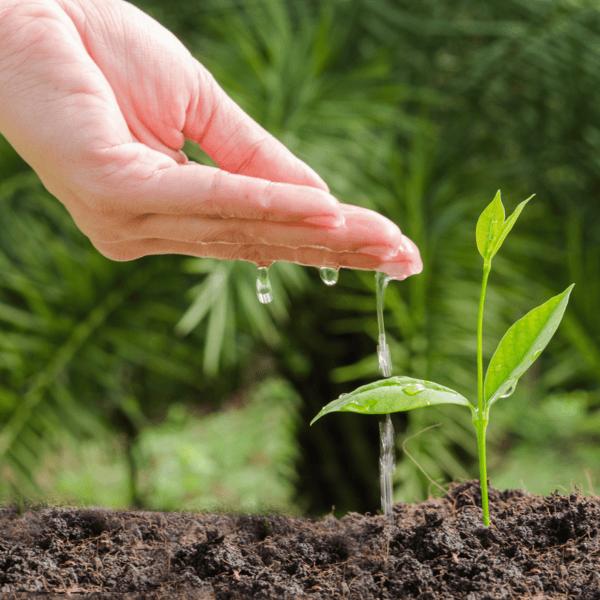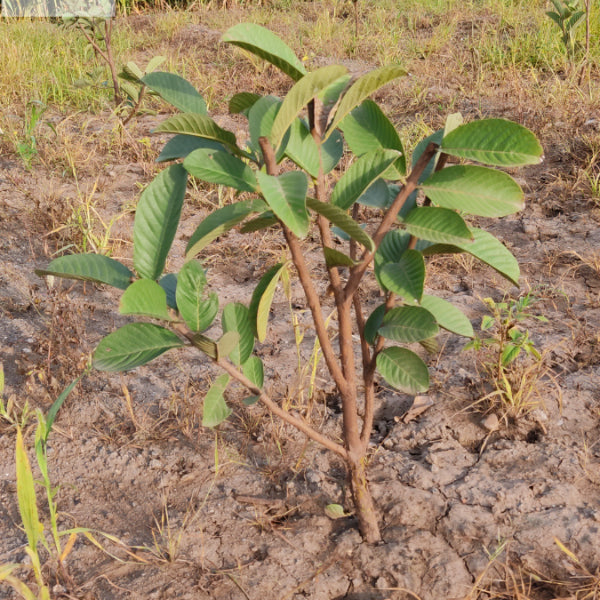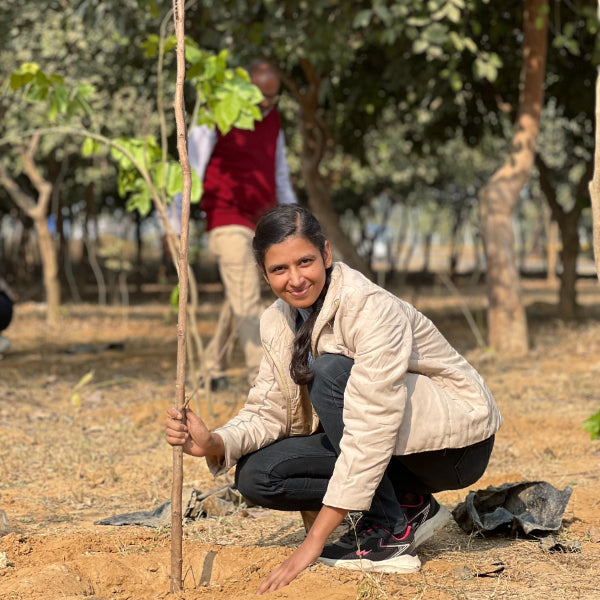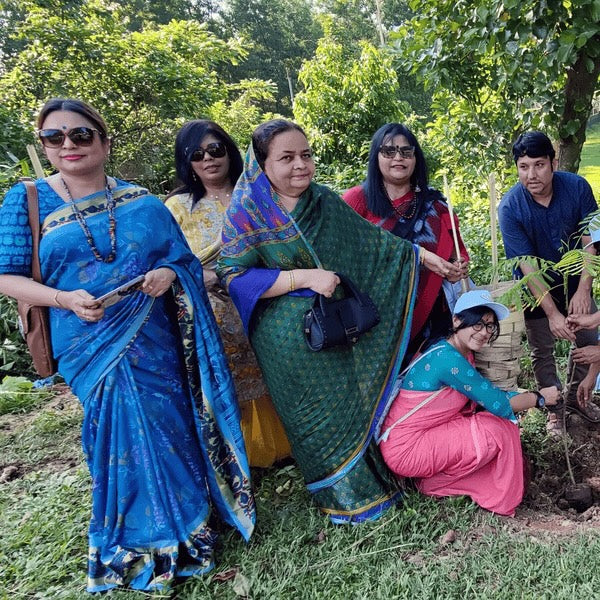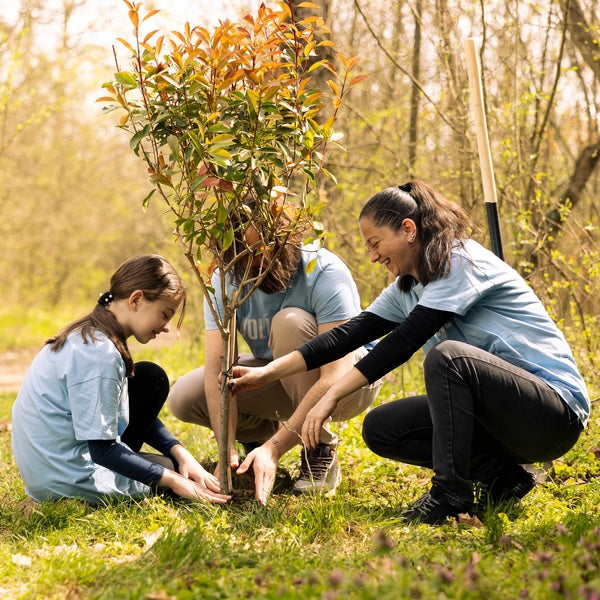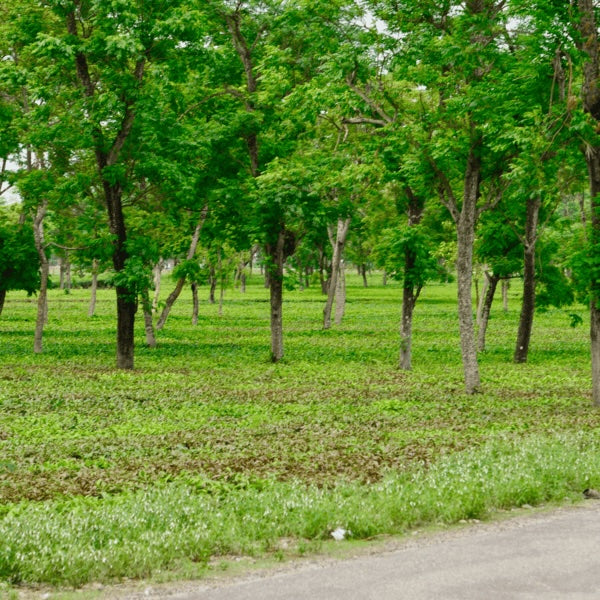Agri-Horticulture in Gujarat: A Fruitful Agroforestry Venture
Gujarat, a vibrant state in India, is renowned for its diverse agricultural practices. Among these, agri-horticulture stands out as a fruitful venture Read more
Connect with us
-
👥 Corporates
If you are looking for:
- 🌲 Tree Plantation Events
- 📊 CSR Projects
📧 corporate@growbilliontrees.com
📞 +91 9699723523
💬 +91 9325931304 WhatsApp (Only)
🕒 Mon - Sat | 10am - 7pm IST
-
🧩 Tree Plantation NGOs
If you are looking for:
- 💰 Financial Assistance
- 🤝 Operational Support
📧 support@growbilliontrees.com
📞 +91 9699723523
💬 +91 9325931304 WhatsApp (Only)
🕒 Mon - Sat | 10am - 7pm IST
-
🌼 Individuals
If you are looking for:
- 👥 Group Tree Plantation Drive
- 🌳 Bulk Tree Plantation
📞 +91 9699723523
💬 +91 9325931304 WhatsApp (Only)
🕒 Mon - Sat | 10am - 7pm IST
Trending
Trees for Corporates
Agri-Horticulture in Gujarat: A Fruitful Agroforestry Venture
Gujarat, a vibrant state in India, is renowned for its diverse agricultural practices. Among these, agri-horticulture stands out as a fruitful venture, blending agriculture and horticulture to maximize land use and enhance productivity. 🌱
Agri-horticulture involves cultivating fruits, vegetables, and flowers alongside traditional crops. This method not only boosts farmers' incomes but also promotes sustainable farming practices. In Gujarat, the climate and soil conditions are ideal for such practices, making it a hotspot for agri-horticulture. 🌞
Historically, Gujarat has been a leader in agriculture. The Green Revolution of the 1960s transformed the agricultural landscape, introducing high-yield varieties and modern farming techniques. Today, agri-horticulture is the next step in this evolution, offering farmers new opportunities. 📈
One of the most significant advantages of agri-horticulture is its ability to improve biodiversity. By integrating various plant species, farmers can create a more resilient ecosystem. This diversity helps in pest control, reduces the need for chemical fertilizers, and enhances soil health. 🌍
In Gujarat, farmers are increasingly adopting agri-horticulture practices. For instance, the cultivation of mangoes, guavas, and pomegranates alongside traditional crops has proven to be highly profitable. These fruits not only cater to local markets but also have a significant export potential. 🍑
Did you know that Gujarat is one of the largest producers of mangoes in India? The state contributes around 25% of the total mango production, showcasing the potential of agri-horticulture. 📊
Moreover, the government of Gujarat has been supportive of agri-horticulture initiatives. Various schemes and subsidies are available to encourage farmers to diversify their crops. This support is crucial for the success of agri-horticulture in the region. 💪
Environmental impact is another critical aspect of agri-horticulture. By promoting sustainable practices, farmers can reduce their carbon footprint. For instance, agroforestry systems, which combine trees with crops, can sequester carbon and improve air quality. 🌳
Agroforestry not only enhances biodiversity but also provides additional income sources for farmers. Timber, fruits, and nuts from trees can be sold, creating a diversified income stream. This is particularly beneficial in times of economic uncertainty. 💰
In addition to economic benefits, agri-horticulture contributes to food security. By growing a variety of crops, farmers can ensure a steady supply of food throughout the year. This is especially important in a country like India, where food security remains a pressing issue. 🍽️
As the world faces climate change challenges, agri-horticulture offers a way to adapt. By promoting resilient farming practices, farmers can better withstand extreme weather events. This adaptability is crucial for the future of agriculture in Gujarat and beyond. 🌦️
Enter Grow Billion Trees, an initiative that is making waves across India. This organization is dedicated to promoting agroforestry and sustainable practices. Their mission aligns perfectly with the goals of agri-horticulture in Gujarat. 🌳
Grow Billion Trees is executing projects that focus on planting trees alongside crops, enhancing biodiversity, and improving soil health. Their approach not only benefits farmers but also contributes to environmental conservation. 🌱
One of their flagship projects involves collaborating with local farmers in Gujarat to implement agroforestry systems. By providing training and resources, they empower farmers to adopt sustainable practices. This initiative has already seen success, with numerous farmers reporting increased yields and income. 📈
Additionally, Grow Billion Trees emphasizes community involvement. They organize workshops and awareness programs to educate farmers about the benefits of agri-horticulture and agroforestry. This grassroots approach fosters a sense of ownership and commitment among farmers. 🤝
Fun fact: A single tree can absorb approximately 48 pounds of carbon dioxide per year! By planting trees as part of agri-horticulture, farmers can significantly contribute to reducing greenhouse gases. 🌍
Moreover, the organization is working on creating a network of farmers who practice agri-horticulture. This network facilitates knowledge sharing and collaboration, allowing farmers to learn from each other’s experiences. Together, they can tackle challenges and celebrate successes. 🎉
As the demand for organic and sustainably produced food grows, agri-horticulture in Gujarat is poised for a bright future. With the support of initiatives like Grow Billion Trees, farmers can thrive while contributing to environmental sustainability. 🌱
In conclusion, agri-horticulture in Gujarat represents a promising agroforestry venture. By integrating diverse crops and sustainable practices, farmers can enhance their livelihoods and protect the environment. With organizations like Grow Billion Trees leading the way, the future looks fruitful for Gujarat’s agricultural landscape. 🌟
Join the movement towards sustainable agriculture and support agri-horticulture initiatives in Gujarat. Together, we can create a greener, more prosperous future for all! 🌍
Agri-Horticulture Practices in Gujarat
In the vibrant tapestry of Gujarat's agricultural landscape, agri-horticulture practices stand out like a peacock in a flock of pigeons. Farmers here have mastered the art of blending agriculture with horticulture, creating a symphony of fruits and vegetables that dance in the sunlight. From the juicy mangoes of Junagadh to the crisp vegetables of Kutch, the state is a veritable cornucopia of produce. The secret sauce? A dash of innovation, a sprinkle of traditional wisdom, and a whole lot of hard work. With the right practices, farmers are not just growing crops; they are cultivating a future filled with promise and prosperity.
Sustainable Farming Techniques
Sustainability is the name of the game in Gujarat's agri-horticulture scene. Farmers are no longer just tilling the land; they are nurturing it like a prized pet. Techniques such as crop rotation, organic farming, and integrated pest management are becoming the norm. It's like giving Mother Nature a spa day—she loves it! By adopting these sustainable practices, farmers are not only boosting their yields but also ensuring that the land remains fertile for generations to come. After all, who wants to be the farmer that leaves behind a barren wasteland? Not in Gujarat!
Agroforestry Benefits
Imagine a world where trees and crops coexist in perfect harmony. That’s the magic of agroforestry, and Gujarat is embracing it with open arms. By integrating trees into agricultural landscapes, farmers are reaping a bounty of benefits. From improved soil health to increased biodiversity, agroforestry is like a multi-tool for farmers. It’s not just about growing crops; it’s about creating a thriving ecosystem. Plus, who wouldn’t want to sip coconut water while picking fresh fruits from the same plot? Talk about a win-win situation!
Market Trends in Horticulture
Keeping an eye on market trends is crucial for any farmer, and in Gujarat, it’s like reading the tea leaves—only with more mangoes. The demand for organic produce is skyrocketing, and savvy farmers are cashing in on this trend. With consumers becoming more health-conscious, the market for fresh, chemical-free fruits and vegetables is booming. Farmers are now not just producers but also marketers, learning the art of selling their produce like seasoned salespeople. It’s a whole new ball game, and those who adapt will thrive.
Irrigation Techniques
Water is life, and in Gujarat, farmers are treating it like liquid gold. Innovative irrigation techniques are transforming the way crops are watered. From drip irrigation to rainwater harvesting, farmers are becoming water wizards. These methods not only conserve water but also ensure that every drop counts. It’s like giving crops a refreshing drink without drowning them in a pool party. With the right irrigation techniques, farmers can boost their yields while being responsible stewards of this precious resource.
Pest Management Strategies
In the world of agri-horticulture, pests are the uninvited guests that everyone wants to avoid. But fear not, Gujarat’s farmers have a few tricks up their sleeves. Integrated pest management strategies are the secret weapons in their arsenal. By combining biological control, cultural practices, and minimal chemical use, farmers are keeping pests at bay without turning their fields into a chemical wasteland. It’s like hosting a party where only the good guests are invited—everyone leaves happy, including the crops!
Crop Diversification
Why put all your eggs in one basket when you can have a whole farm full of goodies? Crop diversification is the name of the game in Gujarat’s agri-horticulture sector. Farmers are planting a variety of crops, from fruits to vegetables, ensuring that they are not at the mercy of market fluctuations. It’s like having a buffet instead of a single dish—there’s something for everyone! This strategy not only boosts income but also enhances soil health and reduces the risk of crop failure. Talk about a smart move!
Government Initiatives
The government of Gujarat is like a supportive parent, always looking out for its farmers. With various initiatives aimed at promoting agri-horticulture, farmers are getting the help they need to thrive. From subsidies on seeds to training programs on modern farming techniques, the support is robust. It’s like having a personal coach cheering you on from the sidelines. With these initiatives, farmers are not just surviving; they are thriving, turning their fields into flourishing enterprises.
You may like
Corporate Plantations
FAQ
What is Agri-Horticulture in Gujarat?
Agri-Horticulture in Gujarat is the harmonious blend of agriculture and horticulture, focusing on the cultivation of fruits, vegetables, and ornamental plants. This venture not only enhances biodiversity but also boosts the local economy. With Gujarat's diverse climate and soil types, it’s a fertile ground for innovative agroforestry practices. At Grow Billion Trees, we believe that this synergy can lead to sustainable farming and a greener planet, one tree at a time!
Why is Gujarat ideal for Agri-Horticulture?
Gujarat boasts a unique combination of favorable climate, rich soil, and a strong agricultural heritage, making it a hotspot for Agri-Horticulture. The state’s varied topography allows for the cultivation of a wide range of crops, from mangoes to medicinal plants. At Grow Billion Trees, we harness these natural advantages to promote agroforestry, ensuring that farmers reap the benefits while contributing to environmental sustainability.
What are the benefits of Agri-Horticulture?
Agri-Horticulture offers a cornucopia of benefits! It enhances soil health, increases biodiversity, and provides farmers with multiple income streams. By integrating trees with crops, we can improve water retention and reduce soil erosion. At Grow Billion Trees, we’re all about maximizing these benefits, ensuring that every farmer can thrive while nurturing the planet. Who knew saving the Earth could be so fruitful
How can I get started with Agri-Horticulture?
Getting started with Agri-Horticulture is as easy as pie! First, assess your land and climate conditions. Next, choose the right mix of crops and trees that suit your environment. At Grow Billion Trees, we offer expert guidance and resources to help you kickstart your agroforestry journey. With a little planning and our support, you’ll be on your way to a bountiful harvest in no time!
What role does agroforestry play in sustainability?
Agroforestry is the superhero of sustainability! By integrating trees with crops, it enhances biodiversity, improves soil health, and sequesters carbon. This practice reduces the need for chemical fertilizers and pesticides, promoting a healthier ecosystem. At Grow Billion Trees, we champion agroforestry as a key strategy for sustainable agriculture, proving that you can grow profits while saving the planet. Talk about a win-win!
Can I grow fruits and vegetables together?
Absolutely! Growing fruits and vegetables together is like hosting a party where everyone gets along. This practice, known as companion planting, can enhance growth, deter pests, and maximize space. At Grow Billion Trees, we encourage this approach, helping farmers create diverse and productive gardens that are both beautiful and bountiful. So, let’s mix it up and watch the magic happen!
What support does Grow Billion Trees offer?
At Grow Billion Trees, we’re your trusty sidekick in the Agri-Horticulture adventure! We provide expert advice, training, and resources to help you succeed in your agroforestry endeavors. From selecting the right species to sustainable farming practices, we’ve got your back. Our mission is to empower farmers and promote a greener future, one tree at a time. Let’s grow together!
How does Agri-Horticulture impact local communities?
Agri-Horticulture is a game-changer for local communities! It creates jobs, boosts local economies, and fosters a sense of community pride. By promoting sustainable practices, we can ensure that future generations inherit a thriving environment. At Grow Billion Trees, we’re committed to uplifting communities through agroforestry, proving that when we grow together, we all flourish. Let’s cultivate a brighter future!

